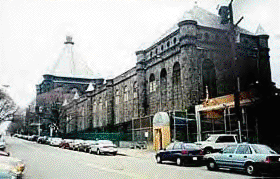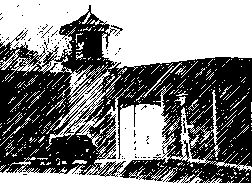|
On the Penitentiary System in the United States and Its Application in France By Gustave de Beaumont & Alexis de Tocqueville [The disciplines of labor.]
The interest of the prisoner requires that he should never be idle; that of society demands that he should labor in the most useful way. In the new penitentiaries none of those machines are found, which, in England, the prisoners set in motion without intelligence, and which occupy them merely in a mechanical way. Labor is not only salutary because it is the opposite of idleness; but it is also contemplated that the convict, while he is at work, shall learn a business which may support him when he leaves the prison. The prisoners therefore, are taught useful trades only; and among these, care is taken to choose such as are the most profitable, and the product of which finds the easiest sale. The Philadelphia system has often been reproached with rendering labor by the prisoners impossible. It is certainly more economical and advantageous to make a certain number of workmen labor together in a common workshop, than to give each of them employment in a separate place. It is moreover true, that a great many arts cannot be pursued with advantage by a single workman in a narrow place; yet the penitentiary of Philadelphia shows that the various occupations which can be pursued by isolated men, are sufficiently numerous to occupy them usefully. The same difficulty is not met with in those prisons in which the convicts work in company. At Auburn and at Baltimore, a very great variety of arts is pursued. These two prisons offer the sight of vast manufactories which combine all useful occupations. At Boston and Sing Sing the occupation of the convicts has, so far, been more uniform. In these two prisons, the greater part of the criminals are employed in cutting stones. Wethersfield offers, on a small scale, the same spectacle as Auburn.
We shall soon see, when we have occasion to treat of the expenses and income, that the labor of the prisoners is in general very productive. Visiting these various establishments, we have been surprised by the order, and sometimes the talent, with which the convicts work, and what makes their zeal quite surprising, is, that they work without any interest in its produce. In our prisons, as well as in those of the greater part of Europe, a part of the produce of their labor belongs to the prisoners. This portion, called the pécule, is more or less in various countries; in the United States it does not exist. There the principle is adopted, that the criminal owes all his labor to society, in order to indemnify it for the expenses of his detention. Thus, during the whole time of their punishment, the convicts work without receiving the slightest remuneration, and if they leave the prison, no account is given to them of what they have done. They merely receive a certain portion of money, in order to carry them to the place which they propose to make their new residence. This system appears to us excessively severe. . . . Let us now examine by what disciplinary means the order of things which we have explained above, is established and maintained. How is silence so rigorously maintained among a number of assembled criminals? How are they made to work without any interest of their own? Here also we have to distinguish between the Auburn and Philadelphia systems. In Philadelphia, the discipline is as simple as the system itself. . . . . The only chastisement which the regulations of the prison permits, is imprisonment in a dark cell with reduction of food. It is rare that more than two days of such discipline are required, to curb the most refractory prisoner. When the convict . . . . has fallen into a dejection of mind, and has sought in labor a relief from his griefs; from that moment he is tamed, and forever submissive to the rules of the prison. What breach of order is it possible to commit in solitude? The entire discipline consists in the isolation of the prisoners, and the impossibility of their violating the established rule. . . . The discipline at Auburn, Sing Sing, Boston, Wethersfield, and Baltimore, could not have the same character of simplicity: these various establishments themselves, follow, in this respect, different courses.
At Sing Sing, the only punishment for those who infringe the established order, is that of the whip. The application of this disciplinary means is there very frequent; and with the least fault is punished with its application. For various reasons this punishment is preferred to all others. It effects the immediate submission of the delinquent; his labor is not interrupted a single instant; the chastisement is painful, but not injurious to health; finally, it is believed that no other punishment would produce the same effects. The same principle is admitted at Auburn, but in its application is extremely rare. The penitentiaries of Boston and Baltimore, a little more severe than that at Auburn, are nevertheless much less so than Sing Sing: Wethersfield differs from all others by its extreme mildness. In this latter prison stripes are not altogether objected to; but their application is as much as possible avoided . . . . The directors of this establishment seem to have a decided aversion to corporal chastisement; yet they would regret it much if they were not invested with the right to inflict it. They reject the application of cruel pain, but they find a powerful means of acting upon the criminals in their authority to order it. . . . |


